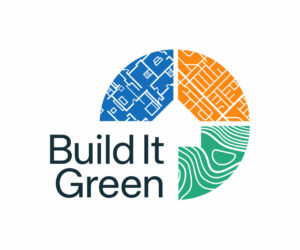
Build It Green’s quest to grow the market for healthy and efficient homes continued its forward progress in 2016. BIG bolstered its reputation as a national leader on green real estate, and made headlines with our innovative ideas and research to achieve Zero Net Energy (ZNE) homes. Below, get a recap on a year of progress with our top 10 most-read stories of 2016.
In August, the California Energy Commission (CEC) awarded BIG a research grant to overcome key challenges to developing zero net energy (ZNE) multifamily buildings. Read more about this fascinating project to pave the way for apartment buildings that produce as much energy as they consumer.
Home energy improvements and energy performance must be factored into a home’s value and selling price. Learn how BIG and the U.S Department of Energy are accelerating efforts to make green home features transparent in all real estate transactions.
In 2016 homeowners spent big on remodeling and upgrades. BIG’s Marc Bigby discusses the results of the 2016 Houzz and Home Report, and the top takeaways for contractors and other professionals.
Zero Net Energy (ZNE) homes are the future of our industry, and ushering them into the mainstream is a priority for Build It Green. In this article, BIG Executive Director Karin Burns summarizes the leading ZNE trends and market drivers.
California—an early leader in the ZNE movement—has more buildings approaching ZNE than any other state in the nation. California-based GreenPoint Rated is actively engaged in helping the state advance its goals by offering new pathways to achieving ZNE.
Accelerating home energy efficiency and market transformation hinges on our ability to share data about a home’s performance and the energy upgrades that it received. To this end, BIG’s Torsten Glidden explains the significance of HPXML—the emerging national data standard for residential energy efficiency.
If you want to spark a lively debate, ask a green building professional about deep energy retrofits. How do we get more homeowners to do them? Is the payback worth the up-front cost? Build It Green is pursuing two market-based approaches that will play a role in mainstreaming deeper energy retrofits for single-family homes.
On the Home Energy Magazine blog, BIG’s Amy Dryden explains the importance of thinking about home water conservation systemically, rather than piecemeal. She describes five accessible technologies that builders, architects and contractors can incorporate into the design of a home’s water system.
Green and energy efficient home features appeal to homebuyers for a wide range of reasons. In this article, we assemble four tips for real estate professionals, on how to open up a conversation about green and energy improvements to a home.
The latest version of GreenPoint Rated sets a new standard in California for green and healthy homes. Read about the new measures incorporated into our system to provide more options for achieving ZNE homes that save more energy, water, and GHG emissions.


Alex Coba
Communication Associate
As a proud California native from Stockton, Alex brings a wealth of experience and a versatile skill set. He has a solid communication background with a Bachelor of Arts in Journalism and Public Relations from California State University, Chico. Alex is adept at strategic communications and media relations, with experience gathering and sharing stories from his local communities that uplift the unique spirit and values of those places. He is excited to join Build It Green, where he can apply his talents to further BIG’s mission to help communities across California thrive